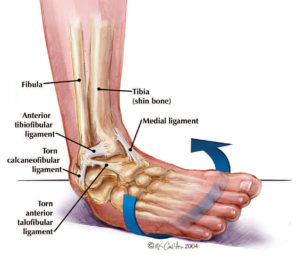Uncovering the Connection: Why Foot Fractures Are More Common During Ankle Sprains
October 2 2023
We’ve all heard the saying, “I twisted my ankle,” usually followed by a dismissive shrug or a laugh. Ankle sprains are indeed a common occurrence, especially among athletes and active individuals. However, what many people may not realize is that foot fractures often go hand-in-hand with ankle sprains. In this article, we’ll explore the intriguing connection between ankle sprains and foot fractures, shedding light on why the latter is more common during the former.

Understanding Ankle Sprains
Before delving into the relationship between ankle sprains and foot fractures, let’s briefly understand what an ankle sprain is. An ankle sprain occurs when the ligaments that hold the bones together within the ankle joint are stretched or torn due to excessive force or an unnatural twisting motion. It’s a painful injury that can range from mild to severe, depending on the extent of ligament damage.
The Foot’s Intricate Anatomy
To comprehend why foot fractures often accompany ankle sprains, we must first appreciate the complex anatomy of the foot. The foot comprises 26 bones, held together by numerous ligaments, tendons, and muscles. These bones are organized into three main sections: the hindfoot, midfoot, and forefoot. The hindfoot includes the talus and calcaneus bones, the midfoot contains the navicular, cuboid, and cuneiform bones, and the forefoot houses the metatarsals and phalanges.
The Connection
1. Twisting Mechanism: One of the most common mechanisms of an ankle sprain is when the foot twists inward (inversion) or outward (eversion). During such twisting motions, the force is not limited to the ankle joint alone; it can also affect the bones of the foot, especially those near the ankle.
2. Weight Distribution: The forces generated during an ankle sprain can be significant, and they often distribute unevenly through the foot. As the ligaments struggle to stabilize the ankle joint, the foot’s bones bear some of this load, making them more susceptible to fractures.
3. Stress Fractures: In some cases, the forces exerted during an ankle sprain can lead to stress fractures in the foot. These tiny, hairline cracks in the bones may not be immediately apparent but can develop over time, causing persistent pain and discomfort.
4. Associated Injuries: Ankle sprains can be accompanied by other injuries, such as contusions, bruises, or cuts. These additional injuries can indirectly contribute to foot fractures by disrupting the foot’s normal biomechanics and making it more vulnerable to fractures.
Prevention and Treatment
Given the connection between ankle sprains and foot fractures, it’s crucial to take measures to prevent these injuries and ensure proper treatment when they occur:
1. Proper Footwear:
Wearing appropriate footwear, especially during physical activities, can provide essential ankle and foot support, reducing the risk of sprains and fractures.
2. Strengthening and Conditioning:
Incorporating ankle-strengthening exercises and balance training into your fitness routine can enhance the stability of your ankle and foot.
3. Early Intervention:
If you suspect an ankle sprain or foot fracture, seek medical attention promptly. Delayed treatment can lead to complications and prolonged healing times.
4. Rest and Rehabilitation:
Follow your healthcare provider’s advice on rest, physical therapy, and rehabilitation exercises to ensure a full recovery and prevent future injuries.
Conclusion
While ankle sprains may seem like minor injuries, they can have far-reaching consequences, including an increased risk of foot fractures. Understanding the connection between these injuries underscores the importance of proper prevention and prompt treatment. By taking steps to protect your ankles and feet, you can reduce the likelihood of these painful and often linked injuries, ensuring a healthier, more active lifestyle.
——
Serving Southwest Florida Since 2005, Family Foot & Leg Center has 9 convenient locations throughout Collier, Lee, Charlotte, and Sarasota Counties. Offering pediatric to geriatric family care: Ingrown Toenails, Heel Pain, Bunions, Foot / Ankle Arthritis Pain, Plantar Fasciitis, Foot / Ankle Surgery, Custom Orthotics, and Diabetic Wound Care. In office X-rays, ultrasounds, and minor surgical suite exam rooms. Practice powered by EMR and advanced technologies. Home of the Lam Minimal Invasive No-Scar Bunion Surgery! Come Discover Why Patients Love Our 5-Star Foot & Ankle Care! Same Day Appointments! Easy Online Appointment Scheduling!


 Fax: (239) 692-9436
Fax: (239) 692-9436 Tel: 239-430-3668
Tel: 239-430-3668
